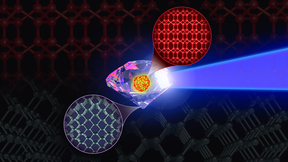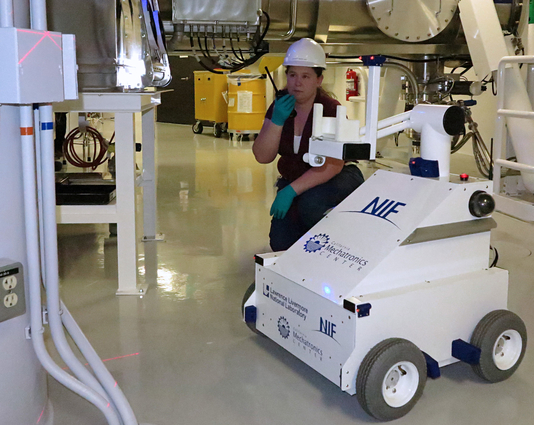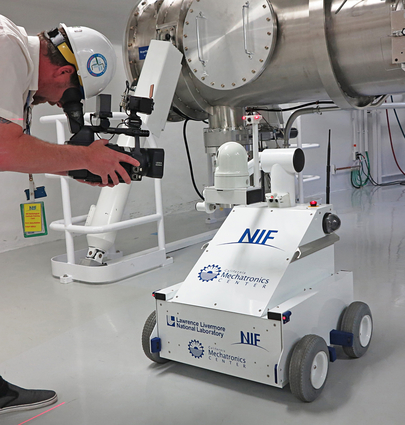D2T3 to join the ranks at National Ignition Facility
D2T3 -- named for the hydrogen isotopes that serve as fuel for NIF's fusion targets -- is a radiation-detecting, remote controlled robot. Currently in testing and training mode, he will be fully deployed in September after three years of development.
D2T3 has found his place in the NIF duty roster due to the continuing success of the facility's experiments. As NIF laser shots continue to yield higher and higher neutron yields -- a marker of the facility's ultimate goal, fusion ignition -- the immediate environment of the Target Bay is inhospitable to humans. Currently, the area remains sealed for a number of hours based on radiation decay models before radiation technicians enter to verify that levels are safe. As a safety precaution, this wait is longer than models predict to provide a safety buffer.
However, D2T3 doesn't have the same constraints as his human colleagues. He can patrol the Target Bay immediately after a shot and measure the remaining radiation levels, providing an accurate and timely notification for when it is safe to re-enter the area. He also can provide real-time decay information, allowing for fine-tuning of the current models.
"This is the first actual, non-tethered robot we've got," said Casey Schulz, a mechanical and robotics engineer who serves as the system manager for D2T3. "It expands the capability of NIF, improves efficiency and maintains the high level of safety we require. It's logically the next step as we continue to reach higher and higher neutron yields."
According to Schulz, D2T3's capabilities will allow workers to re-enter the Target Bay as soon as it is safe, which is especially important because Level 2 is where many of the vital diagnostics are housed. Faster re-entry means a faster read of experimental results. In addition, this will assist in compressing the time between each laser shot.
D2T3 is equipped with five drive cameras to allow the operator to see on all sides of the robot, including an inspection camera with 360-degree pan, tilt, zoom and resolution high enough to be able to read the tag numbers on various valves. The robot has the ability to interface with a Fluke ion chamber, a beta/gamma survey instrument, and provides the readings back to the operator. It also has the ability to take those readings at a variety of different heights, specifically at the whole body height.
Six visual laser references provide positioning and guidance information for its operator. D2T3 has a custom collision awareness system -- when an obstacle is sensed within three inches of any side of the robot, the maximum allowable speed to the motors is cut in half and the operator is notified with a blinking red and yellow screen. Another safety feature is an emergency stop function if communication is lost, either on the robot or at the control station.
D2T3 was developed in partnership with the California Mechatronics Center at California State University, Chico. Jason Coates, design engineer at Chico, said this type of project is exactly what the center likes to take on.
"Our niche is lower-cost remote controllable vehicle with remote surveillance capabilities, so this project was right up our alley," Coates said. "Our vision has been to build something like this. This system is the result of several design iterations and refinements, and it's a very proven and refined system now."
"It's always cool to work on robotics in general, but it's even cooler that it's for NIF," he added. "We built a robot that will be used in the world's largest laser."
Contact
Breanna Bishop[email protected]
925-423-9802
Related Links
National Ignition FacilityTags
National Ignition Facility and Photon ScienceNational Ignition Facility
Lasers and Optical S&T
Lasers
Featured Articles









